
In Hof Ashkelon, between Ashkelon and Ashdod are the remains of some amazing sand dunes that used to stretch all along the Mediterranean coast. When Israel was created, the leaders of the state thought that the dunes had no special value, so cities were built on top of many of them. Today, there are still two protected dune areas, one north of Ashdod before Tel Aviv and the other between Ashdod and Ashkelon, which we visited. We were treated to an hour of Yair Farjun‘s time. He is the director of the Beit Sefer Sadeh, the field school of the Nitzanim sand dunes.

The field school--picture taken from the dunes
The Nitzanim Sand Nature Reserve is over 25,000 dunam (4 dunam equal an acre) The park is 8 kilometers long (almost 5 miles) and between 800 meters (1/2 mile) and 2.5 kilometers (1.5 miles) wide at the most. The area has a Sahara Desert ecology with a Mediterranean climate, a unique environment.
In 1948, 3% of the dunes was covered with plants. Now approximately 50% is covered and in 30 to 40 years in will be 95% covered unless something is done to halt the progress. Yair proceeded to explain how the dunes began and how this modern situation had come about.

Dunes heavily covered by vegetation
The most prevalent theory was that sand was just along the coast for thousands of years. Around the year 600 or so, the easternmost branch of the Nile (called the Afilusit?) around a big city called Filusion somehow got filled with sand and dried up. As a result, a huge sand tsunami ensued that lasted for close to 100 years, blowing sand from that former branch of the Nile to the East and North. As a result, millions of cubic meters of sand fell on what is now Israel.
Recently, archeologists have become interested in the dunes of Nitzanim because they have evidence to show that Byzantine cities probably lie 6 or 7 meters under some of these dunes. When the sand storms hit in the 600s, the cities were eventually buried, according to this theory.
Before Israel’s independence, this area flowed with rolling sand dunes and looked very much like the Sahara. The area averages about 450 mm of rain a year (about 18”), and much of the wind occurs when it rains. The wind at the Nitzanim dunes, however, only may hit 80 kph (50 mph) 5 times a year. Usually the winds are around 20 to 30 kph (12 to 18 mph) which is not stong enough to cause the dunes to roll, especially when the winds occur with rain too. So the dunes would more likely be static, not rolling.

So why were they rolling before 1950? During that time, there were several dozen small Arab villages around the area including Majdal. Beduin from the Beersheva area frequented these dunes in winter and early spring. They came with sheep and goats and also camels who fed on the plants, especially those in the lower parts of the rolling dunes where water had gathered. As they walked over the hilly part, their hoofs broke the patina, the thin harder crust of sand. By doing so, the wind come move the sand. Since the animals ate the plants, the dunes had almost none and could roll more freely. If you look at arial photos taken during World War I and also from the 1920s, 1930s, and 1940s for this area, the dunes look just like the Sahara.
Then starting in 1949 to 1967, there was a steady increase in the plants covering these dunes.
However, in 1967 and 1968, the plants decreased somewhat and the percent covered by plants stayed somewhat the same until 1982.
From 1983 until now, there has again been a steady increase in the number of plants.
What caused all of these to come about? The basic answer is politics.
After the War of Independence, there was a huge demographic change in this part of Israel. Most of the Arabs in the villages surrounding the dunes left, so they no longer brought their animals to graze in the areas. Also, from 1949 until 1967, the Beduin of the Negev were under the control of the military police, and they were not allowed to move around so much, especially not to these dunes. So without the animals there to eat the plants that grew on the dunes nor to break the patina, the plants grew, and the dunes stayed static and did not roll.
After 1967, the Beduin had more freedom, and many came to these areas to graze their animals in winter. There were fewer animals than pre-1948 and not year round, so the area covered by plants did not decrease much. The Beduin did cut down some of the bigger trees, however, to use for firewood. In 1982, with the Peace with Egypt agreement, Israel gave up Sinai and had less land. The Defense Minister, later Agriculture Minister Arik Sharon, helped pass the “Land of Israel” law which evicted people from land they did not own. The Beduin were most affected, and few were allowed back on the Nitzanim dunes It took about 3 to 4 years to keep them from coming back. That is why the plants have covered so much of the dunes since then.
Only in the past 25 years have Israelis begun to realize how valuable these dunes are. Some plants only grow there and in no other place in the world. Small animals still live in the dunes and may not be able to live elsewhere. We saw evidence of this both in abundant animal feces of small animals, holes of small animals, and foot and tail prints in the sand.

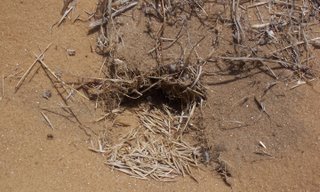
Animal Feces
Animal holes

Land Snails on plants in the dune areas
If these dunes disappear, there could be a huge ecological impact, soresearchers in many fields have shared knowledge to work to protect these dunes.

What is the future? Yair is excited about plans for the fall to bring Beduin back to the area. A special program is being set up with plans to pay a few Beduin to resettle in the area and work with scientists and graduate students to help reclaim the dunes. Their major weapon will be camels. They hope to bring in 40 or 50 camels for this area. (Ten to 20 would not be enough for 25,000 dunam of land, and 100 would be too many according to researchers.) Why camels? Because they eat everything. While goats eat the smaller plants, camels eat anything within their reach. The Beduin will also cut down some of the bigger trees too for firewood.

A large tree in the dune area nowadays
Camels also are sturdier animals and need to drink a lot less often that goats. Also, the camels have bigger hoofs and can break down the patina sand crust at a faster rate than smaller animals.

Can you just imagine these Israeli camels settling in to the Nitzan area?

Howard asked if the jeeps and dune buggies that sometimes go on these dunes help or hurt the dunes. Yair said that ten researchers have been checking into that. He said that the wheels of the vehicles have helped to break up the patina, but that they are not the answer. Israel has a renewed need for camels here.
After talking with Yair, Howard and I drove closer to the dunes and then hiked in them for over an hour.
For more information on the Society for the Protection of Nature in Israel, please check out their American Friends website at:
http://www.aspni.org/
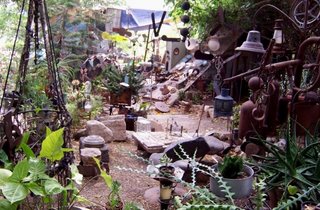 Pinchas' work area in the back. Swing he made for his kids on the left.
Pinchas' work area in the back. Swing he made for his kids on the left.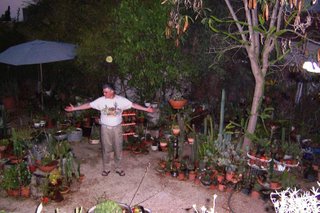 Look at the size of the back garden!
Look at the size of the back garden!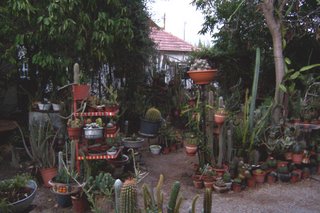 Part of Dalia's garden area
Part of Dalia's garden area I love the shape of this succulent.
I love the shape of this succulent. Speckled marks on this cactus are unusual
Speckled marks on this cactus are unusual
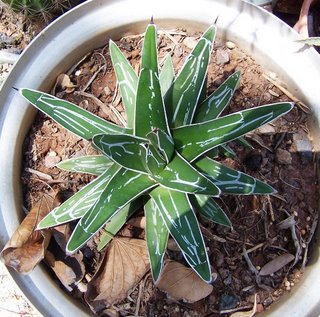

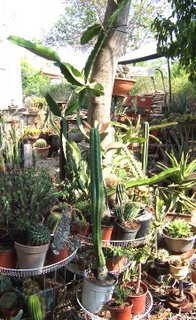 climbing
climbing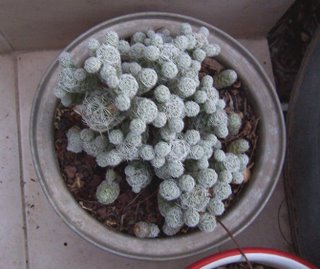 One of my favorites. This picture does not do it service.
One of my favorites. This picture does not do it service.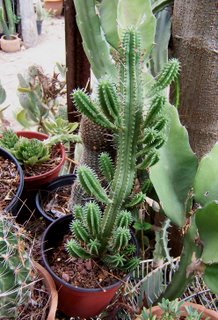 Another upright one...
Another upright one... Another small cute one
Another small cute one
 Small cactus with thorns that really hurt and close up of thorns
Small cactus with thorns that really hurt and close up of thorns Dalia checking and cleaning a plant
Dalia checking and cleaning a plant
 We watched this bud grow for over 5 days. It only opened briefly
We watched this bud grow for over 5 days. It only opened briefly

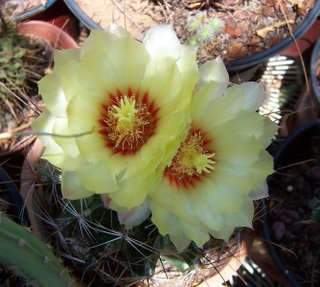

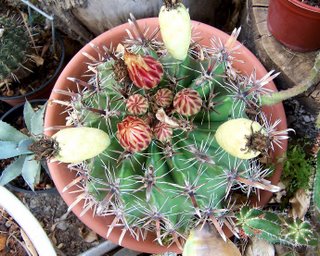

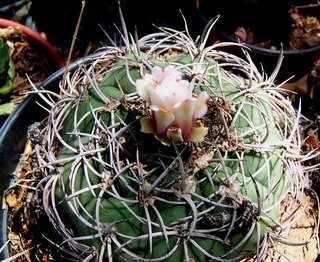
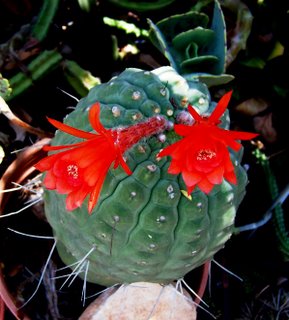
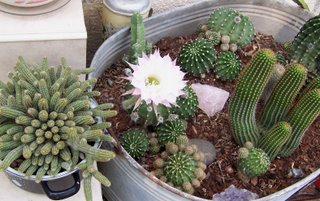
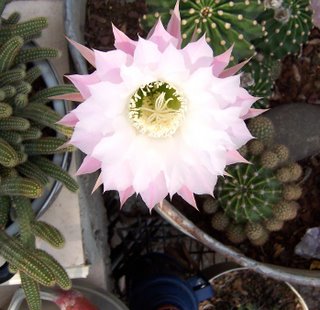
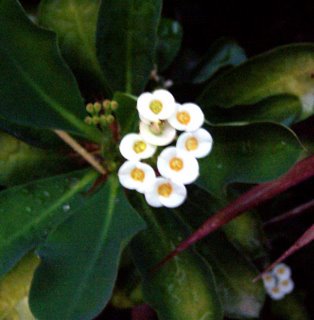
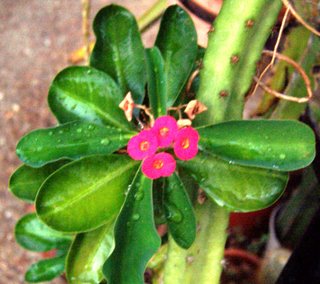


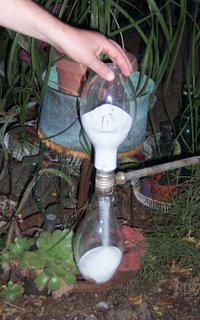
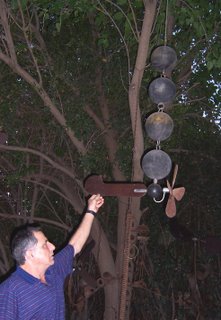
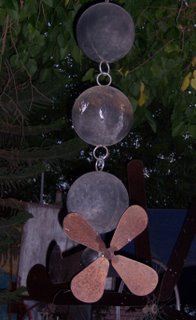


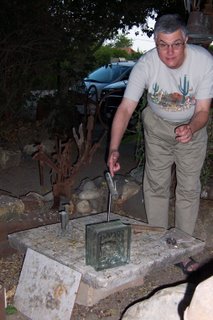
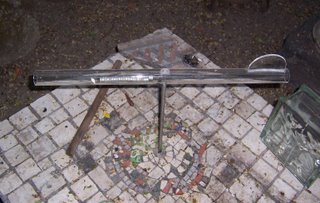


 A glass and magnetic mobile/sculpture
A glass and magnetic mobile/sculpture








 Can you just imagine these Israeli camels settling in to the Nitzan area?
Can you just imagine these Israeli camels settling in to the Nitzan area?



